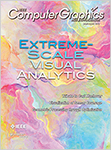
IEEE COMPUTER GRAPHICS AND APPLICATIONS
Scope & Guideline
Unveiling New Dimensions in Visual Technology
Introduction
Aims and Scopes
- Computer Graphics Techniques:
The journal showcases research on advanced computer graphics techniques, including rendering, modeling, and animation, which are essential for creating high-quality visual content. - Visualization and Visual Analytics:
A core area of the journal is the development and application of visualization techniques that help in understanding complex datasets across various fields such as medicine, engineering, and social sciences. - Extended and Virtual Reality:
The journal explores the use of extended reality (XR) technologies, including augmented reality (AR) and virtual reality (VR), to create immersive experiences that enhance user engagement and learning. - Data-Driven Insights:
Research that emphasizes data-driven methodologies to extract insights from large datasets is a significant focus, leveraging machine learning and artificial intelligence to improve decision-making processes. - Interdisciplinary Applications:
The journal encourages interdisciplinary research that applies computer graphics and visualization techniques to diverse fields such as education, healthcare, and environmental science.
Trending and Emerging
- Generative AI in Visualization:
A significant trend is the application of generative AI techniques to enhance visualization processes, enabling the creation of complex visual outputs from simple inputs, thus streamlining workflows. - Interactive and Immersive Experiences:
Research on creating engaging interactive experiences through VR and AR technologies is on the rise, reflecting a growing interest in user-centered design and experiential learning. - Machine Learning for Visual Analytics:
There is an increasing emphasis on integrating machine learning with visualization techniques to improve the analysis of large datasets and enhance interpretability of results. - Social and Ethical Implications of Visualization:
Emerging research focuses on the ethical considerations and societal impacts of visualization practices, particularly in areas like data privacy, representation, and bias. - Real-Time Data Visualization:
The demand for real-time data visualization solutions is increasing, driven by applications in fields such as finance, healthcare, and emergency response, where timely insights are crucial.
Declining or Waning
- Traditional Animation Techniques:
There seems to be a decline in research focused on traditional 2D animation techniques, as the field shifts towards more immersive and interactive forms of media, such as VR and AR. - Static Data Visualization:
Research centered on static forms of data visualization is becoming less prevalent, as dynamic and interactive visualizations are increasingly preferred for their ability to engage users more effectively. - Desktop Software Development:
There is a noticeable reduction in papers discussing desktop software solutions for graphics and visualization, with a shift towards web-based and cloud solutions that offer greater accessibility and collaboration.
Similar Journals
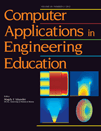
COMPUTER APPLICATIONS IN ENGINEERING EDUCATION
Fostering excellence in engineering education with digital tools.COMPUTER APPLICATIONS IN ENGINEERING EDUCATION, published by Wiley, is a leading journal dedicated to the intersection of computer science and engineering education. With its ISSN 1061-3773 and E-ISSN 1099-0542, this journal has become a vital resource since its inception in 1992, providing valuable insights and advancements within its scope. Renowned for its high impact, the journal is categorized in the Q1 in Education and Q1 in Engineering (miscellaneous) quartiles, reflecting its significant contribution to the fields of education and engineering. The journal holds impressive Scopus rankings, including Rank #41 in General Engineering and Rank #38 in General Computer Science, positioning itself within the top echelons of relevant academic disciplines. Although it is not currently an open-access publication, it provides researchers, educators, and students with a platform to explore innovative computer applications in engineering contexts. This journal not only serves as a repository of knowledge but also fosters a community for professionals interested in enhancing educational methodologies through technology.
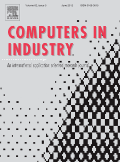
COMPUTERS IN INDUSTRY
Shaping the future of industry with high-impact research.COMPUTERS IN INDUSTRY is a premier journal published by Elsevier, dedicated to the exploration and advancement of the intersection between technology and industrial applications. With a history spanning from 1979 to 2024, this high-impact journal holds prestigious Q1 rankings in both Computer Science and Engineering, showcasing its significant contribution to the fields of general engineering and computer science. Notably, it ranks #4 out of 307 journals and #9 out of 232 journals in their respective categories on Scopus, placing it in the top 2% of publications worldwide. Although it is not an Open Access journal, it continues to serve as a vital resource for researchers, professionals, and students seeking in-depth insights and innovative research findings in industrial computing. The journal’s objective is to publish high-quality, peer-reviewed articles that advance the understanding and application of computer systems in industrial environments, reaffirming its crucial role in driving technological progress and operational efficiency.
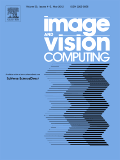
IMAGE AND VISION COMPUTING
Pioneering research at the intersection of vision and computation.Image and Vision Computing, published by Elsevier, serves as a leading international journal focused on the dynamic fields of computer vision, pattern recognition, and signal processing. With its esteemed Q1 category rankings in these areas and an impressive standing in Scopus metrics, where it ranks 19th in Computer Vision and 23rd in Signal Processing, this journal has firmly positioned itself at the forefront of academic research and innovation. Established in 1983, it continues to publish cutting-edge research that drives advancements in technology and applications across various domains. The journal is committed to disseminating high-quality, peer-reviewed articles that address significant challenges and propose novel solutions, making it an essential resource for researchers, practitioners, and students alike. While not an open access journal, Image and Vision Computing offers a wealth of valuable insights into the ever-evolving landscape of visual computing technologies.
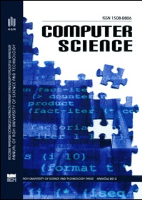
Computer Science-AGH
Transforming Research into Impactful SolutionsComputer Science-AGH, published by the AGH University of Science & Technology Press in Poland, is an esteemed open access journal that has been disseminating high-quality research since 2004. With ISSN 1508-2806 and E-ISSN 2300-7036, this journal focuses on a diverse range of areas within the computer science discipline, including but not limited to Artificial Intelligence, Computational Theory, Computer Graphics, and Networks. While it currently holds a Q4 ranking across several categories as of 2023, it actively promotes research that contributes to the academic community's understanding and evolution in the field. The journal's commitment to open access ensures that vital research is accessible to a wider audience, fostering collaboration and innovation. With its comprehensive focus and strategic publication goals, Computer Science-AGH plays a crucial role in advancing the frontiers of computer science research and education, making it an invaluable resource for researchers, professionals, and students alike.

Frontiers in Computer Science
Transforming ideas into impactful research in computer science.Frontiers in Computer Science is a premier open-access journal published by Frontiers Media SA that has rapidly established itself as a prominent platform for scholarly research in the diverse and evolving field of computer science. With a notable impact factor reflecting its high citation rates, this journal aims to disseminate innovative findings and groundbreaking studies across multiple subdisciplines, including Computer Science Applications, Computer Vision and Pattern Recognition, and Human-Computer Interaction. Since its inception in 2019, and with a consistent trajectory from 2019 to 2024, it has garnered accolades, achieving Q2 ranking in several categories and an impressive Q1 in miscellaneous areas of computer science. Researchers, professionals, and students alike are encouraged to contribute to this dynamic journal that serves as a vital resource for advancing knowledge and fostering collaborative dialogue in the global computer science community. Frontiers in Computer Science is committed to providing open access to research, promoting unrestricted sharing of ideas and fostering innovation at the intersection of technology and society.
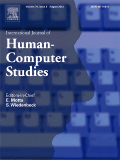
INTERNATIONAL JOURNAL OF HUMAN-COMPUTER STUDIES
Pioneering Insights for a Tech-Driven FutureINTERNATIONAL JOURNAL OF HUMAN-COMPUTER STUDIES, published by Academic Press Ltd - Elsevier Science Ltd, stands at the forefront of research dedicated to the dynamic interplay between humans and technology. With a remarkable impact factor reflective of its rigorous academic standards and its prestigious ranking in the Q1 category across vital disciplines such as Education, Engineering, Human Factors and Ergonomics, and Human-Computer Interaction, this journal serves as an essential resource for researchers, professionals, and students alike. Spanning from 1994 to 2024, it showcases pioneering studies that contribute significantly to the understanding of cognitive processes, usability, and the evolving role of technology in society. Despite the absence of Open Access options, access to this journal is facilitated through institutional subscriptions, ensuring that critical findings and advancements are readily available to a global audience. By continuing to publish high-quality research, the INTERNATIONAL JOURNAL OF HUMAN-COMPUTER STUDIES plays a crucial role in advancing the field, fostering innovation, and guiding future research directions.

JOURNAL OF FLOW VISUALIZATION AND IMAGE PROCESSING
Innovative Techniques for Understanding Fluid BehaviorThe Journal of Flow Visualization and Image Processing, published by Begell House Inc, serves as a pivotal forum for scholars and practitioners in the fields of computer science applications, condensed matter physics, and mechanical engineering. Since its inception in 1996, this journal has been dedicated to advancing the understanding of fluid dynamics through visualization techniques and image processing methodologies. With a publication trajectory extending to 2024, the journal has established a solid reputation, reflected in its Q3 categorization across multiple disciplines as of 2023, indicating its relevance and contribution to current research paradigms. Although it is not an open-access journal, it offers invaluable insights and findings that are critical for researchers, professionals, and students alike who are interested in the complexities of flow phenomena and their applications. The journal's commitment to disseminating high-quality research—despite its current rankings, which show room for improvement—underscores its potential for growth and the vital role it plays in fostering innovation within the scientific community.
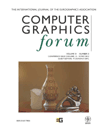
COMPUTER GRAPHICS FORUM
Driving Excellence in Computer Graphics ResearchCOMPUTER GRAPHICS FORUM, an esteemed journal published by Wiley, is a leading platform for disseminating cutting-edge research in the fields of computer graphics and computer-aided design. With a prestigious Q1 ranking in both Computer Graphics and Computer-Aided Design and Computer Networks and Communications (2023), this journal consistently showcases high-impact studies that influence the development of visualization techniques and graphic systems. Covering a wide array of topics from rendering algorithms to virtual and augmented reality applications, COMPUTER GRAPHICS FORUM is committed to fostering innovation and interdisciplinary collaboration within the global research community. Although it does not offer open access, the journal maintains a rigorous peer-review process, ensuring the highest standards of academic quality and integrity. With its rich history since 1982 and an ongoing commitment to advancing the state of knowledge in computer graphics, this journal is essential reading for researchers, industry professionals, and students looking to stay at the forefront of technological advancements.
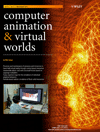
COMPUTER ANIMATION AND VIRTUAL WORLDS
Advancing Knowledge at the Intersection of Art and Science.COMPUTER ANIMATION AND VIRTUAL WORLDS, published by Wiley, is a pivotal journal in the fields of Computer Graphics and Computer-Aided Design, as well as Software. With a focus on the intersection of technology and creativity, the journal provides a platform for researchers and professionals to share innovative studies, new methodologies, and insights that shape the future of computer animation and virtual environments. Currently holding a Q2 category in Computer Graphics and a Q3 in Software for 2023, it ranks #63 out of 106 in its niche, highlighting its influence and relevance in the academic community. Though the journal operates under a subscription model, it also offers options for open access, ensuring that a broader audience can engage with groundbreaking research. The journal has been publishing continuously since its inception in 2004 and looks forward to further contributions as it moves towards its 20th anniversary in 2024. Whether you are a seasoned researcher, an industry professional, or a student eager to explore these dynamic fields, COMPUTER ANIMATION AND VIRTUAL WORLDS is an essential resource for advancing knowledge and innovation.
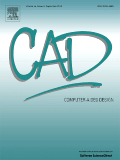
COMPUTER-AIDED DESIGN
Exploring the Intersection of Technology and DesignCOMPUTER-AIDED DESIGN is a premier journal published by Elsevier Science Ltd, dedicated to the dynamic fields of Computer Graphics and Computer-Aided Design, as well as Industrial and Manufacturing Engineering. With a long-standing history since its inception in 1968, this journal plays a vital role in disseminating high-quality research and innovative methodologies that shape the future of design and engineering practices. It is positioned in the upper quartiles (Q1 and Q2) across multiple categories, highlighting its impact and reputation, with a notable 74th percentile ranking in Computer Graphics and Computer-Aided Design related fields. Researchers, professionals, and students will find valuable insights and advancements that not only push the boundaries of knowledge but also facilitate practical applications in the industry. The journal's emphasis on enhancing collaboration between academia and industry aligns with contemporary trends towards integrated design and manufacturing processes, making it an essential resource for anyone looking to stay at the forefront of technological advancement. Authors are encouraged to submit original articles that contribute to the multidisciplinary discourse within these domains.